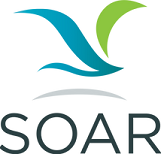Start Date
19-4-2017 9:00 AM
End Date
19-4-2017 12:00 PM
Description
The ASBMB curriculum for an undergraduate degree recommends a set of skills that can be acquired only through laboratory courses and research experience. Based on a previously reported purification scheme for BSA (Odunuga and Shazhko, 2013), we designed a robust, reproducible, cost-effective, safe and enquiry-based undergraduate biochemistry laboratory course that encompasses many of the skill-sets recommend-ed in the ASBMB curriculum. Our work not only modi-fied certain steps in the scheme, it also included addi-tional steps to enhance student learning and skill ac-quisition. Salt precipitation, ion exchange and size ex-clusion chromatography were employed by students to purify BSA from cow plasma. Presence of major contaminants of BSA purification, IgGs and nucleases, were tested in the purified sample by western blotting and DNase I assay respectively. The DNase as-say step provides an opportunity for students to learn basic molecular biology techniques such as plasmid isolation and restriction-enzyme digestion. One major addition to the purification process is the bromocre-sol green-BSA complex assay to precisely quantitate BSA at each step and generate a purification table. Comparison of sequences and other parameters of al-bumin proteins from common animals provides a bio-informatics twist to student experience. Abundance of albumin from the plasmas of common animals, cow, pig and chicken, allows for variation in the de-sign of the course, and students can work in groups or individually. The course could be designed as a half-semester or full-semester biochemistry laboratory module.
Tell us how this article helped you.
Design of a robust undergraduate biochemistry laboratory course based on a modified and expanded bovine serum albumin purification scheme
The ASBMB curriculum for an undergraduate degree recommends a set of skills that can be acquired only through laboratory courses and research experience. Based on a previously reported purification scheme for BSA (Odunuga and Shazhko, 2013), we designed a robust, reproducible, cost-effective, safe and enquiry-based undergraduate biochemistry laboratory course that encompasses many of the skill-sets recommend-ed in the ASBMB curriculum. Our work not only modi-fied certain steps in the scheme, it also included addi-tional steps to enhance student learning and skill ac-quisition. Salt precipitation, ion exchange and size ex-clusion chromatography were employed by students to purify BSA from cow plasma. Presence of major contaminants of BSA purification, IgGs and nucleases, were tested in the purified sample by western blotting and DNase I assay respectively. The DNase as-say step provides an opportunity for students to learn basic molecular biology techniques such as plasmid isolation and restriction-enzyme digestion. One major addition to the purification process is the bromocre-sol green-BSA complex assay to precisely quantitate BSA at each step and generate a purification table. Comparison of sequences and other parameters of al-bumin proteins from common animals provides a bio-informatics twist to student experience. Abundance of albumin from the plasmas of common animals, cow, pig and chicken, allows for variation in the de-sign of the course, and students can work in groups or individually. The course could be designed as a half-semester or full-semester biochemistry laboratory module.



